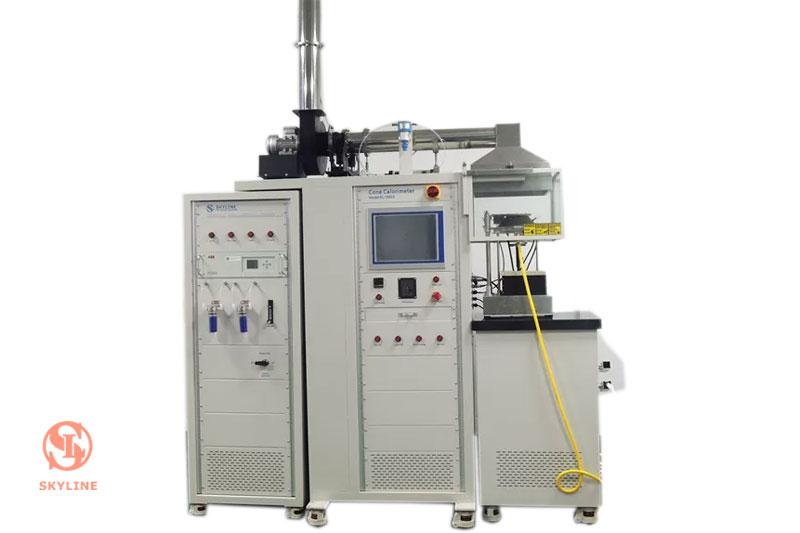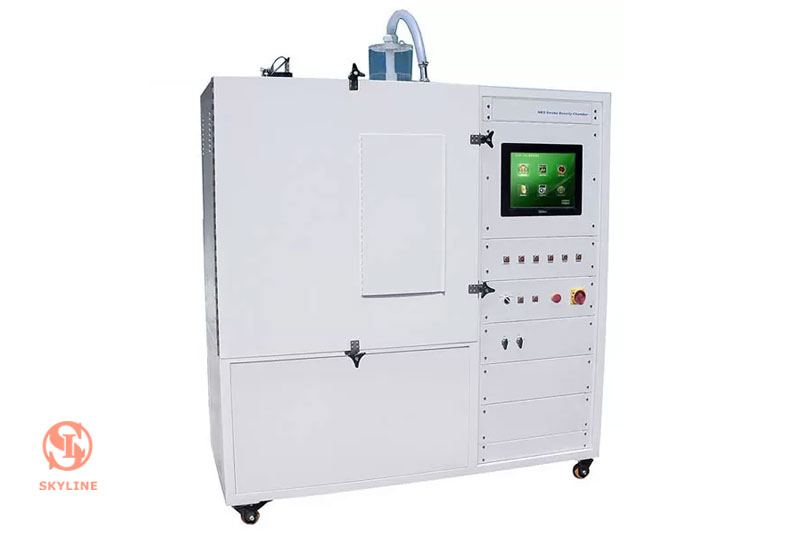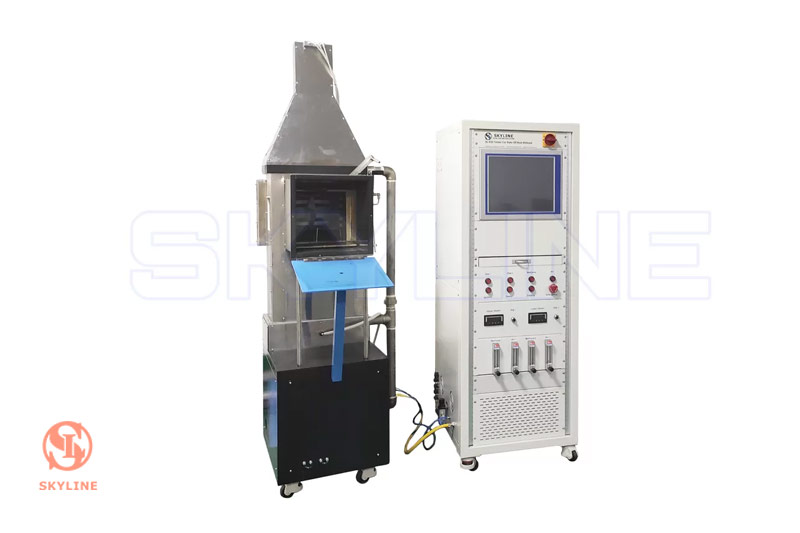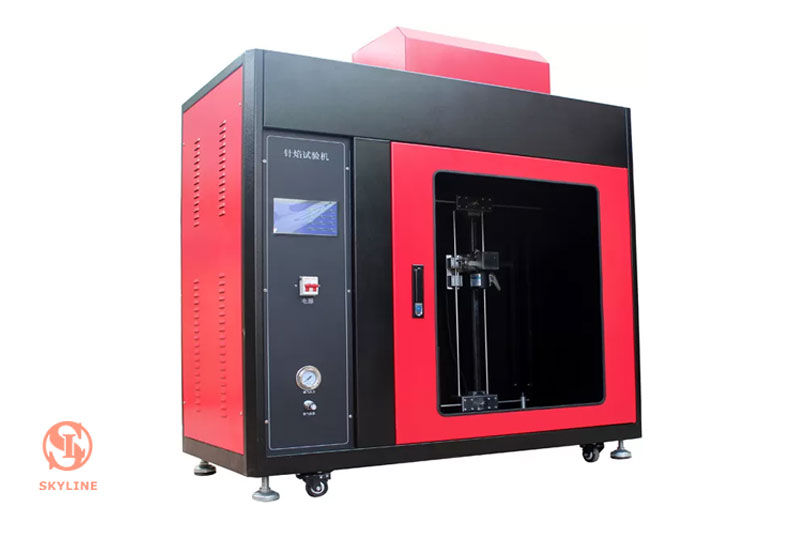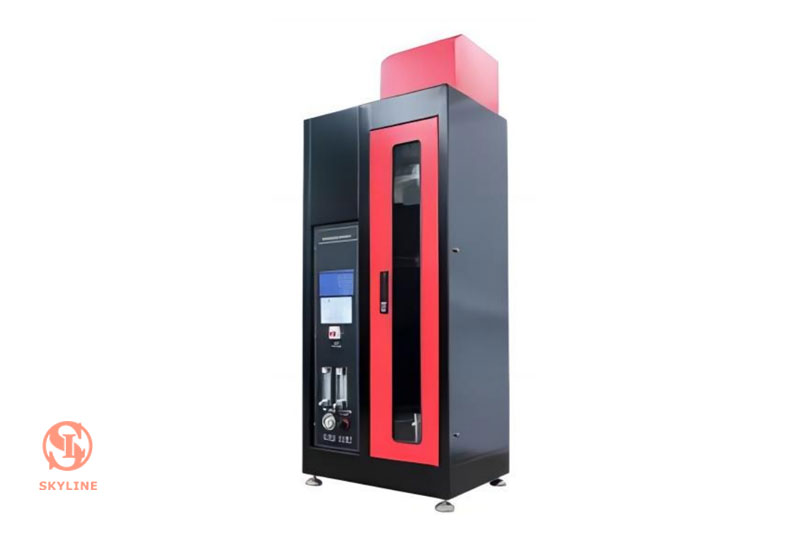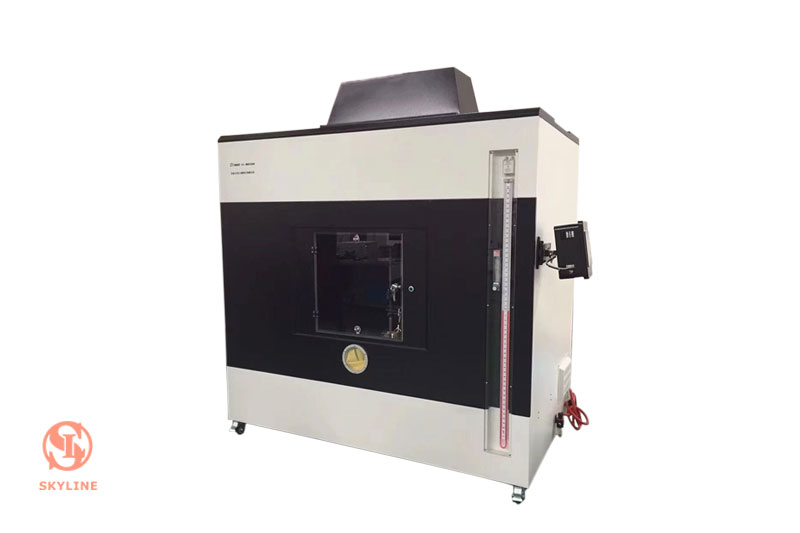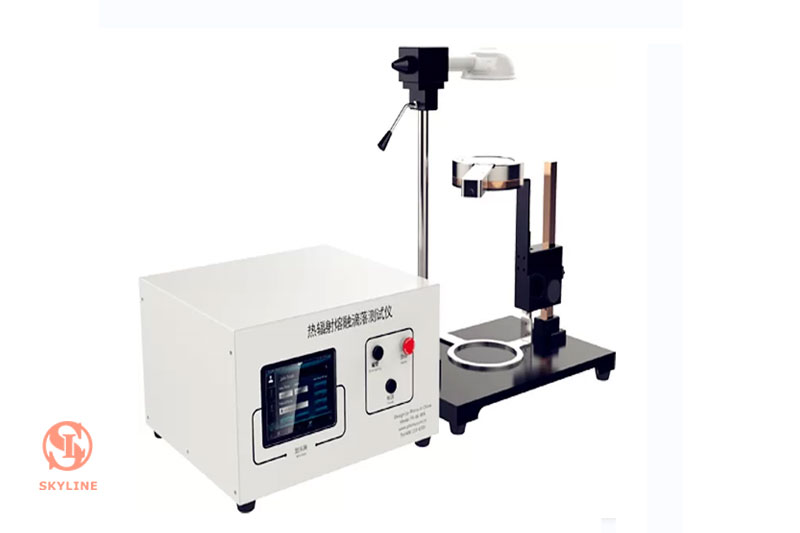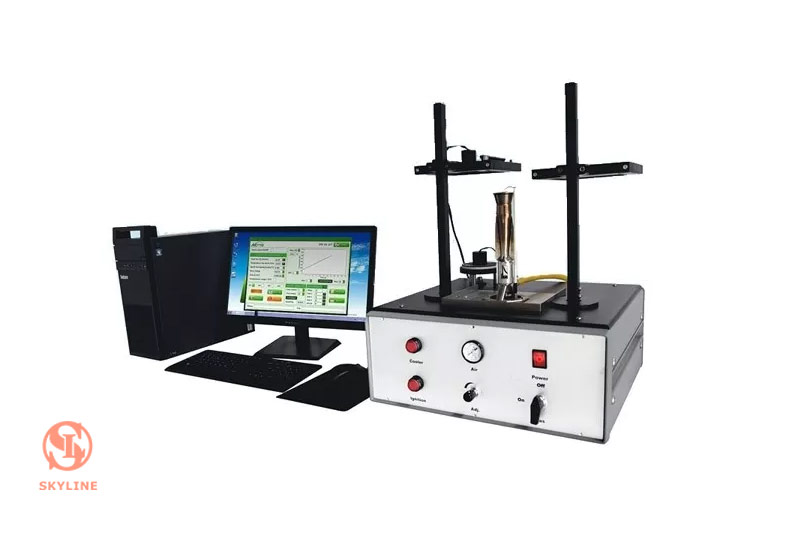limiting oxygen index tester
Time: Author: SKYLINE Editor
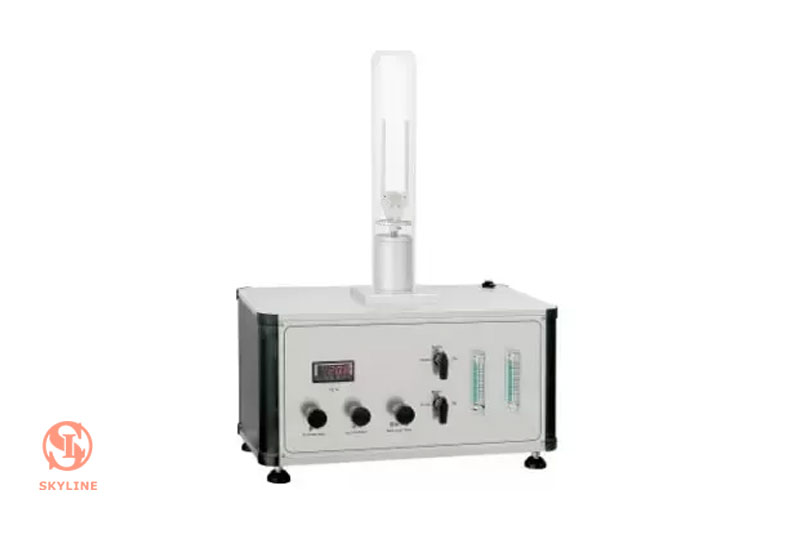
There are several methods for performing an LOI test, but the general procedure is as follows:
1.Obtain a sample of the material to be tested and cut it into a uniform shape and size, such as a rectangular prism.
2.Set up the limiting oxygen index tester according to the manufacturer's instructions. This may involve placing the sample in a container, connecting the tester to a gas source, and calibrating the device.
3.Begin the test by gradually reducing the concentration of oxygen in the air around the sample. This is usually done by replacing some of the oxygen with an inert gas, such as nitrogen.
4.Observe the flame on the sample as the oxygen concentration is decreased. The LOI is the lowest concentration of oxygen at which the material continues to burn.
5.Record the LOI value and any other relevant data, such as the type of gas used and the conditions of the test.
It is important to follow the manufacturer's instructions and observe all safety precautions when using an limiting oxygen index tester. This may include wearing protective gear and ensuring that the test area is well-ventilated.

